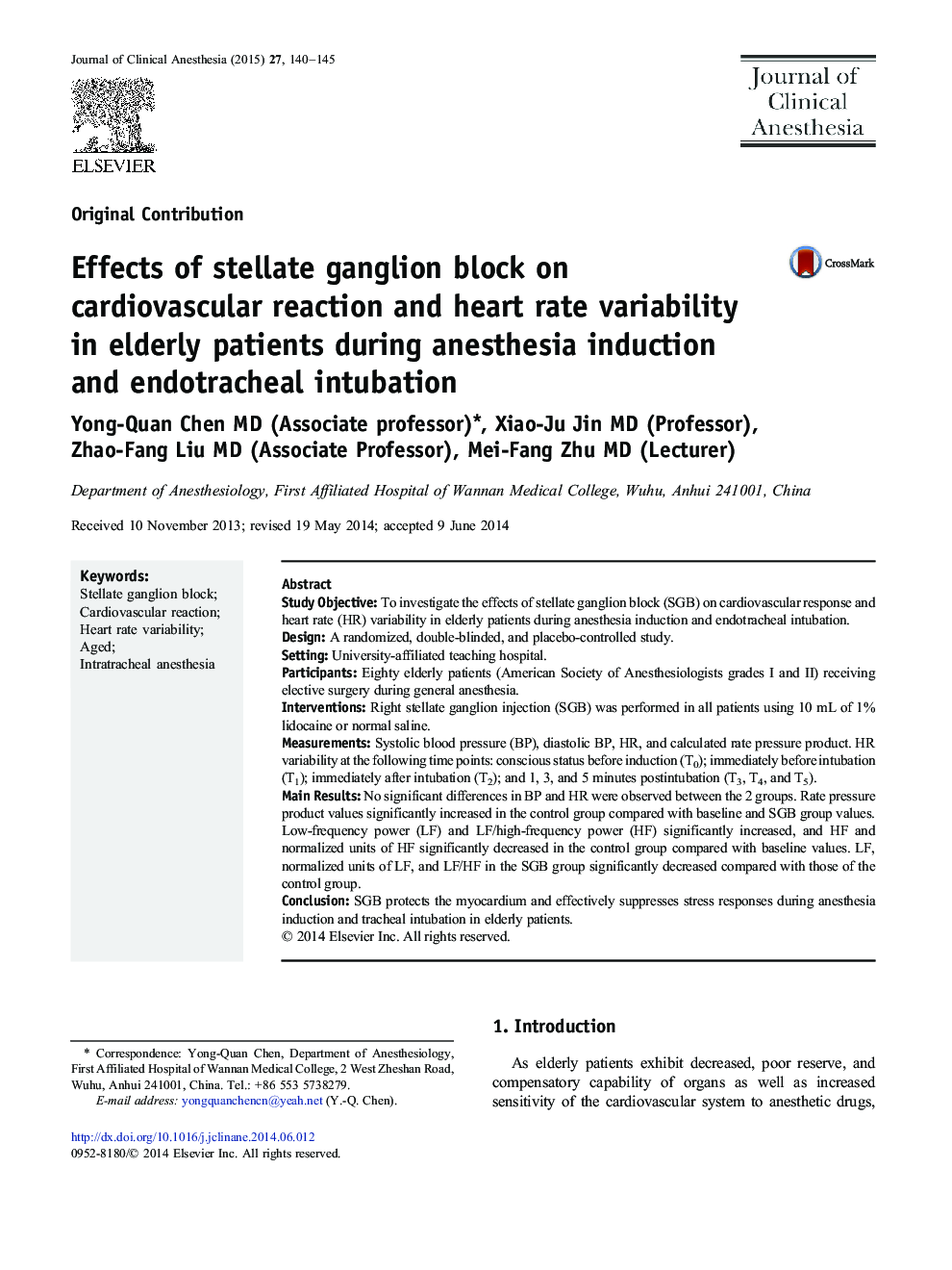| Article ID | Journal | Published Year | Pages | File Type |
|---|---|---|---|---|
| 2762421 | Journal of Clinical Anesthesia | 2015 | 6 Pages |
Study ObjectiveTo investigate the effects of stellate ganglion block (SGB) on cardiovascular response and heart rate (HR) variability in elderly patients during anesthesia induction and endotracheal intubation.DesignA randomized, double-blinded, and placebo-controlled study.SettingUniversity-affiliated teaching hospital.ParticipantsEighty elderly patients (American Society of Anesthesiologists grades I and II) receiving elective surgery during general anesthesia.InterventionsRight stellate ganglion injection (SGB) was performed in all patients using 10 mL of 1% lidocaine or normal saline.MeasurementsSystolic blood pressure (BP), diastolic BP, HR, and calculated rate pressure product. HR variability at the following time points: conscious status before induction (T0); immediately before intubation (T1); immediately after intubation (T2); and 1, 3, and 5 minutes postintubation (T3, T4, and T5).Main ResultsNo significant differences in BP and HR were observed between the 2 groups. Rate pressure product values significantly increased in the control group compared with baseline and SGB group values. Low-frequency power (LF) and LF/high-frequency power (HF) significantly increased, and HF and normalized units of HF significantly decreased in the control group compared with baseline values. LF, normalized units of LF, and LF/HF in the SGB group significantly decreased compared with those of the control group.ConclusionSGB protects the myocardium and effectively suppresses stress responses during anesthesia induction and tracheal intubation in elderly patients.
